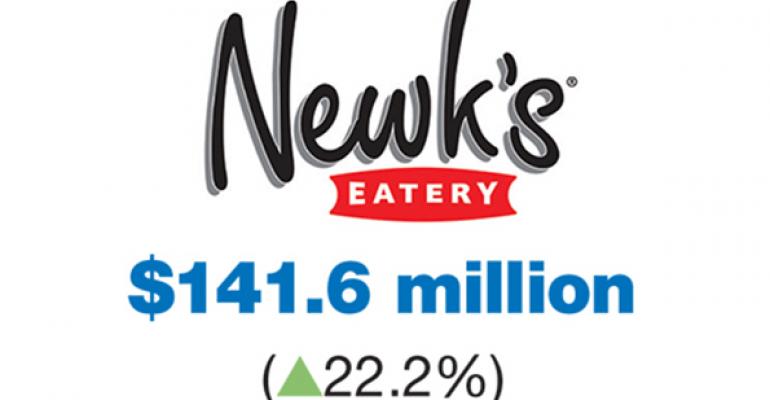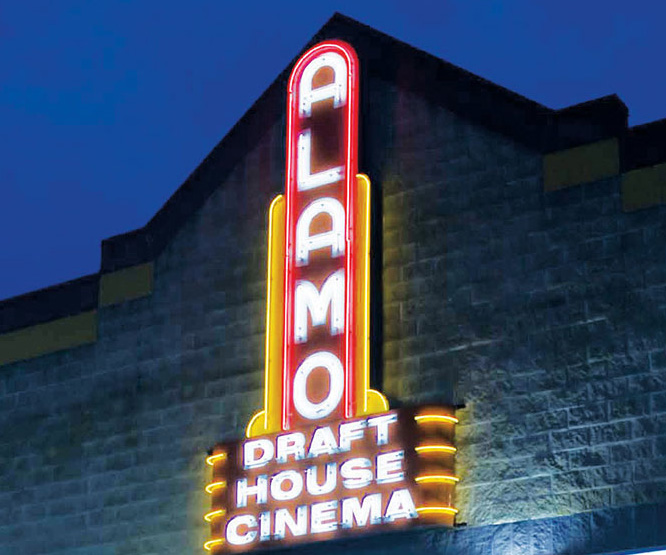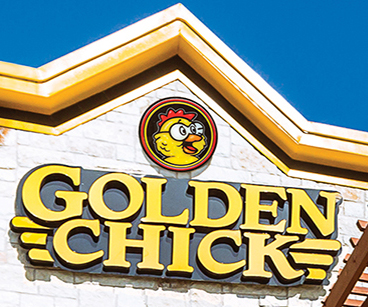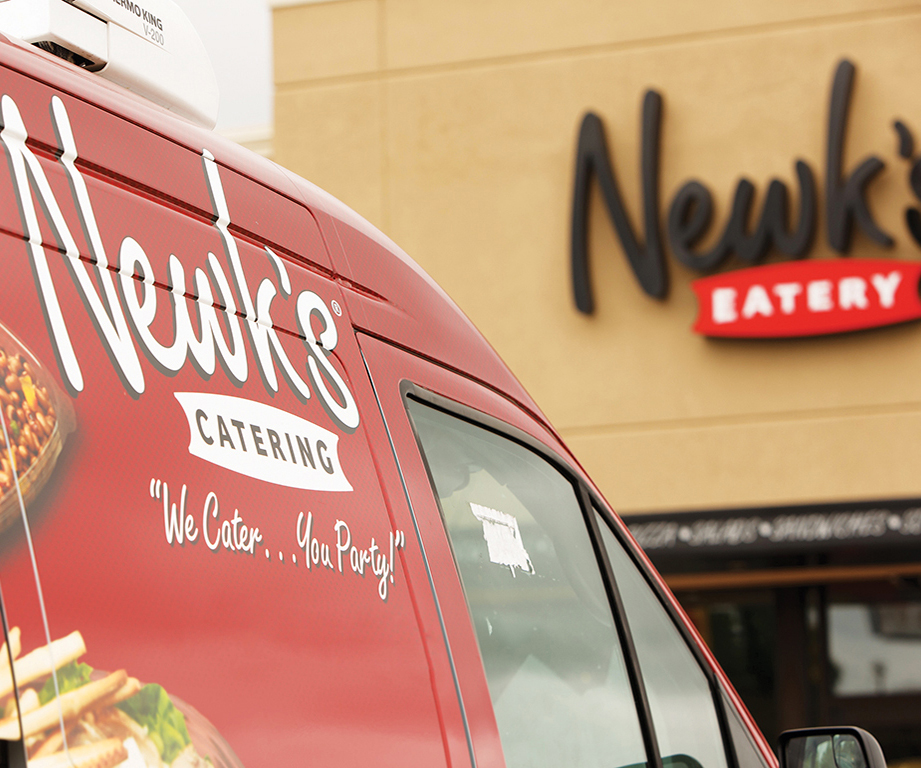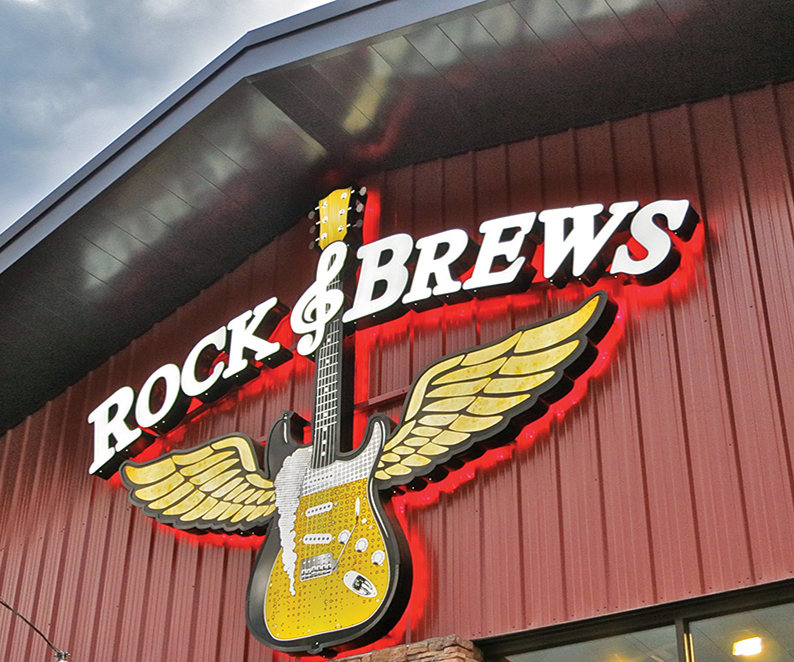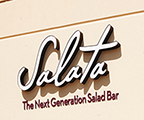Several chains within the fast-growing 2015 Nation’s Restaurant News Next 20 have relied on flexibility to achieve brand goals.
The Next 20 universe includes chains on the brink of entering the ranks of the Top 200 based on sales and unit data compiled during research for NRN’s annual Top 100 and Second 100 reports. The Next 20 booked average year-over-year growth in U.S. systemwide sales of 29.4 percent in their latest completed fiscal years. In comparison, the Top 200 — or Top 100 and Second 100 chains combined — had average domestic system sales growth of 6.1 percent.
Even if off of relatively small bases, the Next 20 chains’ Latest-Year unit growth was also impressive in the competitive U.S. foodservice arena, and reflected a willingness by some brands to try new formats, footprints and markets. David H. Stone, managing partner and principal at The New England Consulting Group, has indicated that such open mindedness is important, as smart operators regularly reassess such things as building sizes and concept variations.
See profiles of the Next 20 standout brands
“The question becomes, ‘What is the store format of the future?’” Stone said.
Next 20 chains cover a large variety of concept types. Looked at through their Latest-Year statistics, they ranged from 190-unit, almost completely franchised treat specialist Bruster’s Real Ice Cream, with estimated sales per unit, or ESPU, of about $304,900, to Lazy Dog Restaurant & Bar, a 15-unit, all company-owned system of casual-dining restaurants with reported average unit volumes of $6 million.
While the Next 20 chains’ average Latest-Year U.S. sales of $76.2 million from 72 locations pales in comparison to the Top 200 chains’ average of $1.28 billion in domestic sales from 1,056 locations, the smaller brands need make no apologies for their group performance. Next 20 chains, on average, grew Latest-Year U.S. locations by 22.9 percent and estimated sales per unit by 4.8 percent, versus the Top 200’s average unit and ESPU growth of 3 percent and 2.7 percent, respectively.
As to Stone’s question of the format of the future, Next 20 chain Rosati’s Pizza, which for most of the past five decades has predominantly fielded carryout and delivery restaurants, has an easy answer.
“Right now we’re aggressively pursuing dine-in. People really seem to want to have a full-service restaurant experience and I think [in Rosati’s case] the appeal is that pizza is an affordable product,” said Marla Topliff, president of Rosati’s Franchising Inc. In particular, she added, the chain is concentrating on the growth of its table-service pizza “sports pub” concept with big screen TVs and full bars.
In franchise disclosure documents, Rosati’s reported 2014 average comparable sports pub sales of $1.2 million that compared with the $483,674 average sales of comparable delivery-carryout stores for which results were available. It ended 2014 with 18 sports pubs, up from seven at the end of 2012, as part of a flexible portfolio that also featured 10 non-sports-pub, table-service locations; 23 fast-casualunits with counter ordering, dine-in seating; and 73 delivery and carryout restaurants.
For Alamo Drafthouse Cinema, which offers casual dining in a theater setting, finding the format of the future might be as simple as being flexible in sales expectations. Susan Mobley, vice president of marketing, said of a dip in the chain’s reported average unit food-and-beverage sales from about $4.6 million in the Preceding Year to $4.2 million in the Latest: “2014 is less than 2013 because it includes two venues with lower than average sales volumes, but also way lower than average rent and conversion costs.”
Varied strategies driving growth
The top five Next 20 chains ranked by Latest-Year growth in U.S. sales were rock-themed casual-dining newbie Rock & Brews, with growth of 201.2 percent, fast-casual, built-to-order-salad maker Salata, up 91.2 percent; Alamo Drafthouse Cinema, up 44.9 percent; Danny Meyer creation and Wall Street obsession Shake Shack, up 41.8 percent; and Burger 21, up 30.2 percent.
Rock & Brews, with airport locations as well as conventional restaurants, and Burger 21, which offers nearly as many chicken, seafood, turkey and vegetarian “burgers” as those from cows, are two more examples of nimble Next 20 brands.
The Next 20 top five chains ranked by Latest-Year increases in U.S. units were Burger 21 and Rock & Brews, tied for No. 1 with growth of 133.3-percent; Salata, up 51.9 percent; Shake Shack, up 44.0 percent; and Lazy Dog and Newk’s Eatery, tied at No. 5, with 15.4 percent growth.

Chris Simms, Lazy Dog’s chief executive, said his brand is growing sales and has the confidence to open in new, as well as existing, markets because of its “constant reinvestment in the guest experience” and menu innovation. He cited recent menu achievements as an upgrade to artisan breads and the addition of authentic Neapolitan pizzas and artificial-ingredient-free “Clean Cocktails” of less than 150 calories.
Given Latest-Year sales levels and growth in sales, Newk’s Eatery and Shake Shack would appear to have the strongest shot at breaking into the 2016 Second 100, with Villa Italian Kitchen as a dark horse for inclusion.
Such handicapping aside, examples of Next 20 chain growth strategies abound.
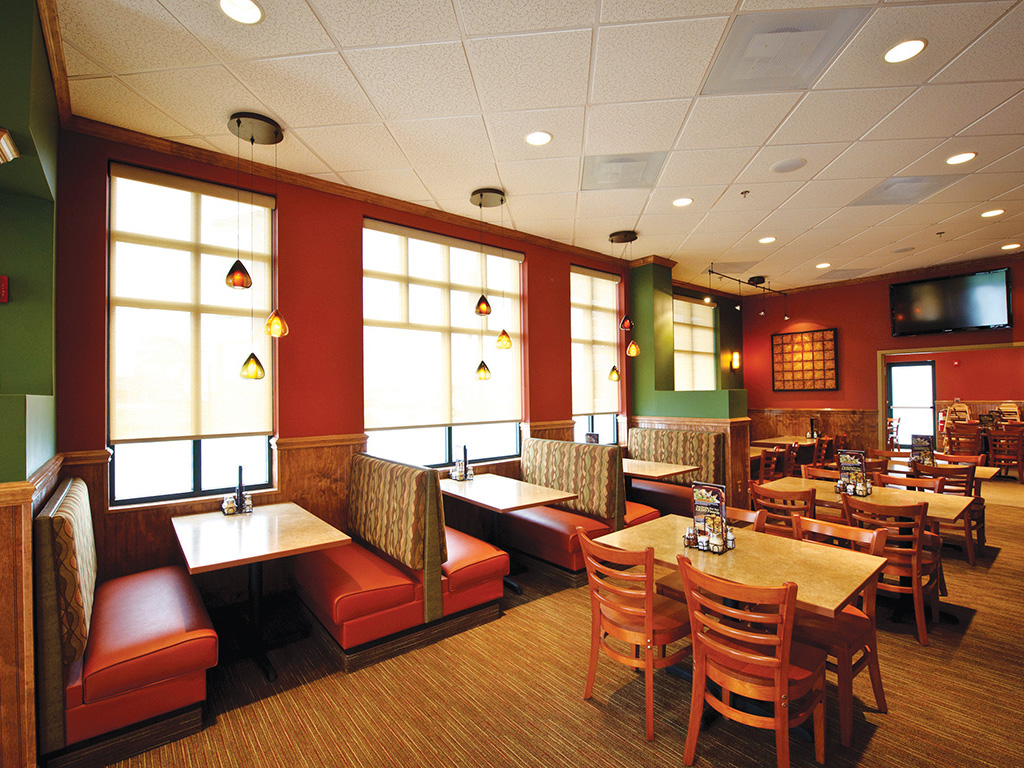
Adam Tripp, marketing and social media specialist for Ledo Pizza Systems Inc., said full-service Ledo Pizza’s 13.4-percent spurt in Latest-Year sales resulted from multiple moves. These initiatives included an increased social media presence, introduction of online ordering at select locations, unit remodels, new menu items and menu price hikes, he said.
At Hwy 55 Burgers, Shakes & Fries the strategy of aiding employees interested in becoming franchisees helped the brand achieve Latest- and Preceding-Year increases in total units of 1.8 percent and 10.1 percent, respectively. Spokesman Andy Moore said that about 60 locations, or roughly half of the system, now are in the hands of employees-turned-franchisees.
Fast-casual Tijuana Flats Tex-Mex’s strong focus on employees helped counter the challenges of accelerating new-store openings, which, when coupled with business-enhancing technologies and growth in online ordering, contributed to 8-percent and 14.3-percent expansion in Latest and Preceding Year sales, respectively, according to Monique Yeager, vice president of marketing.
And Jeffrey Gosnear, vice president of Grotto Pizza, said a gluten-free-pizza launch helped lift Latest-Year sales 5.8 percent at the casual-dining chain, as did strong consumer response to a restaurant in the new market of Gambrills, Md., that also inspired work on a second unit for that region.
Contact Alan J. Liddle at [email protected].
Follow him on Twitter: @AJ_NRN

